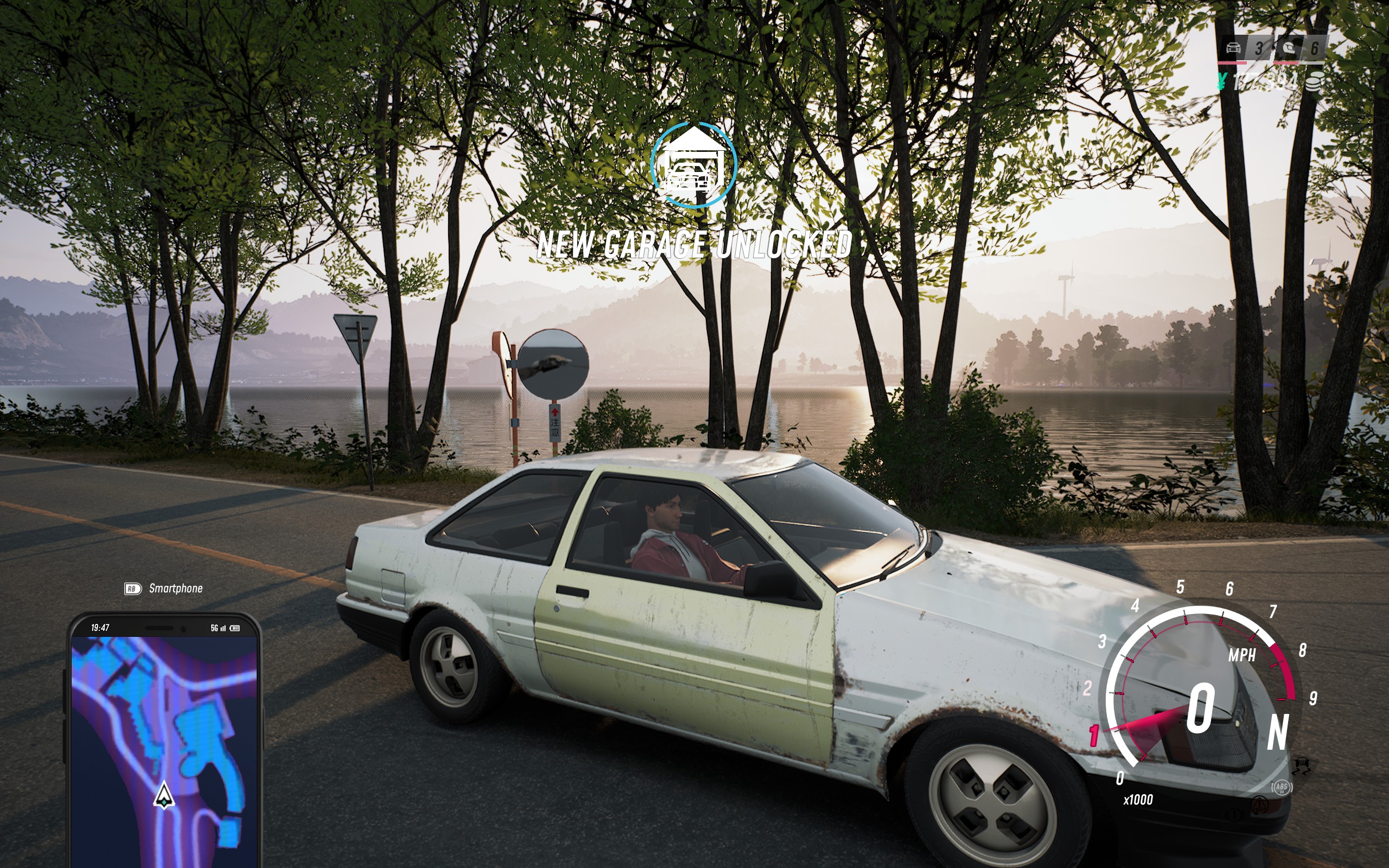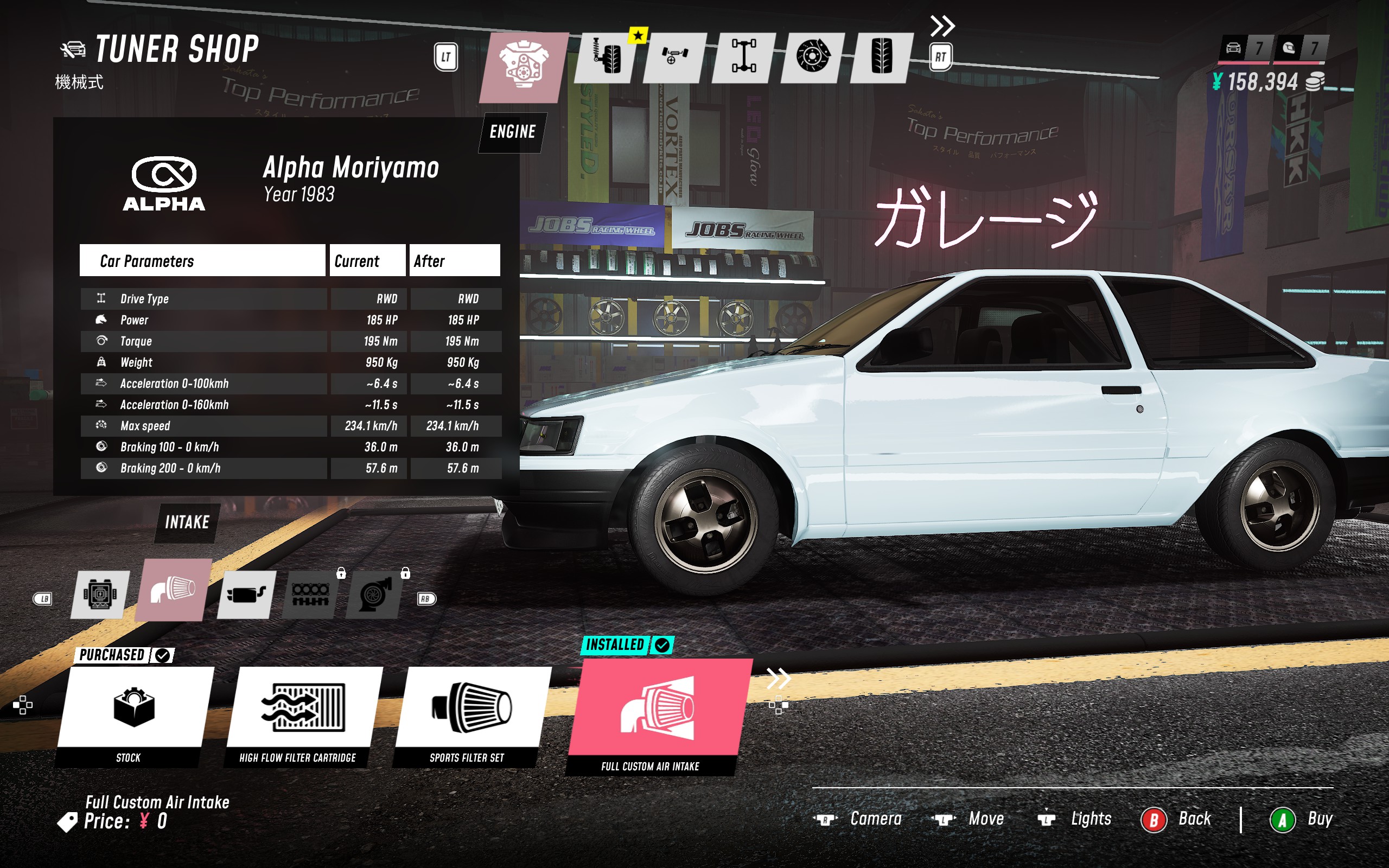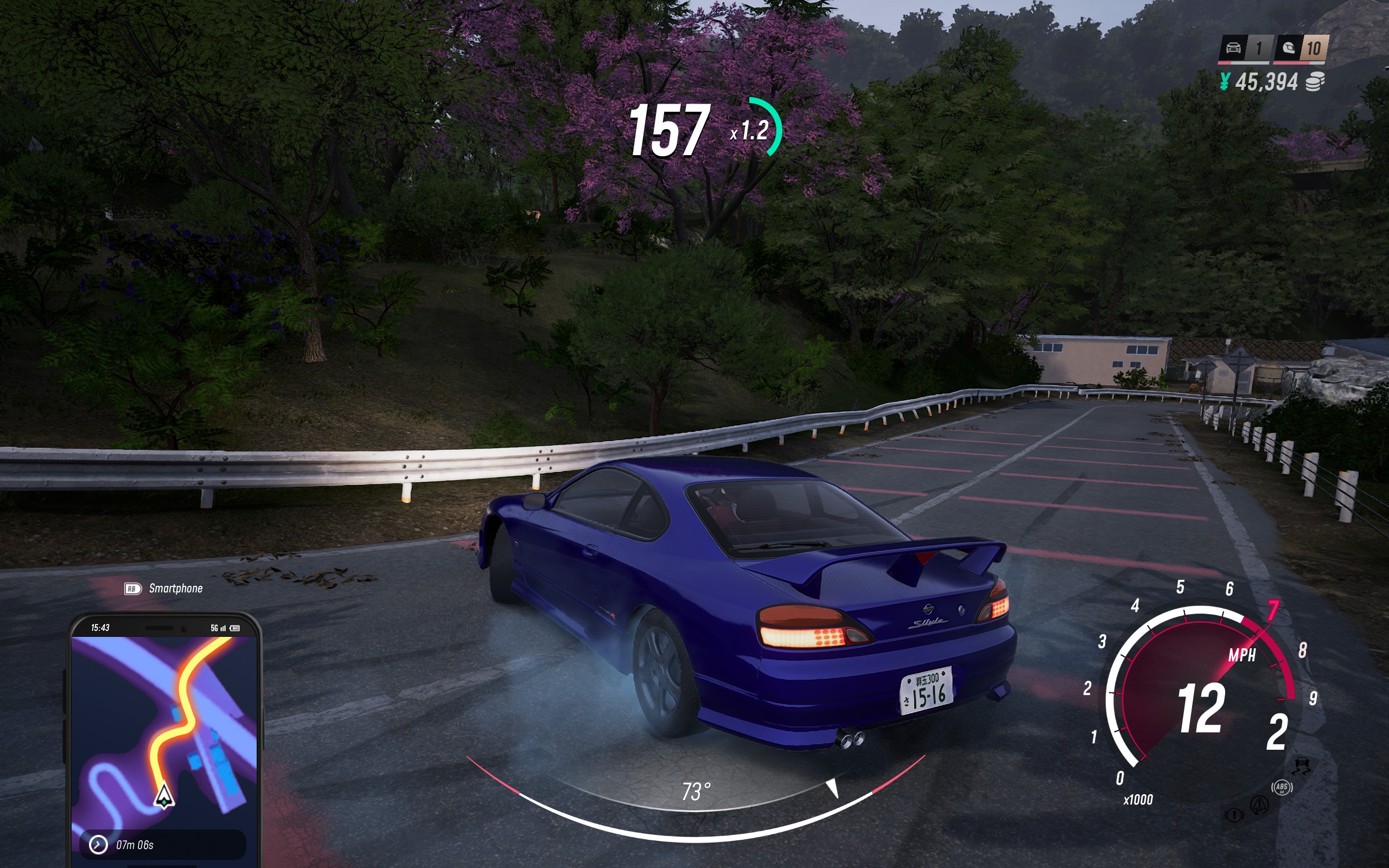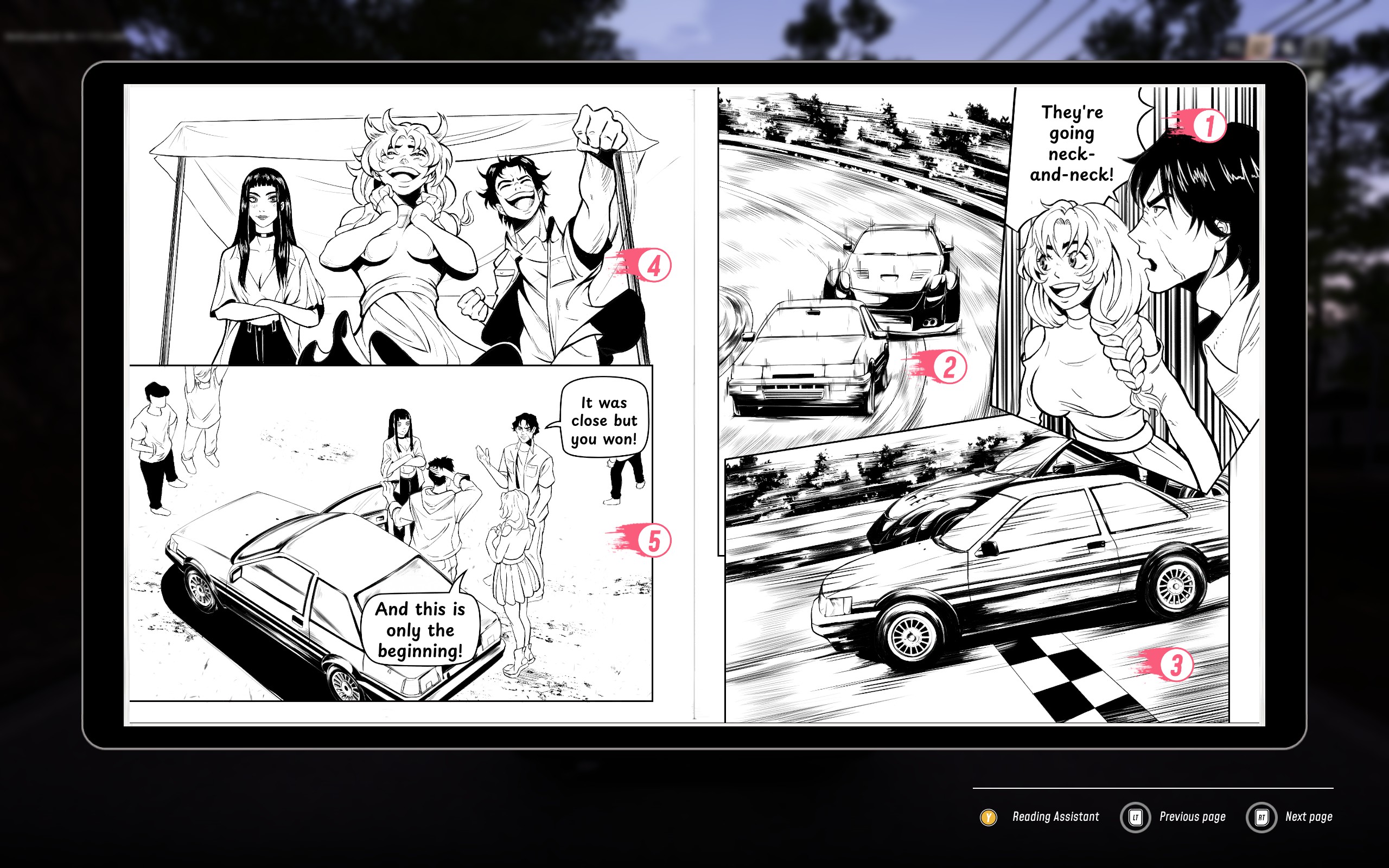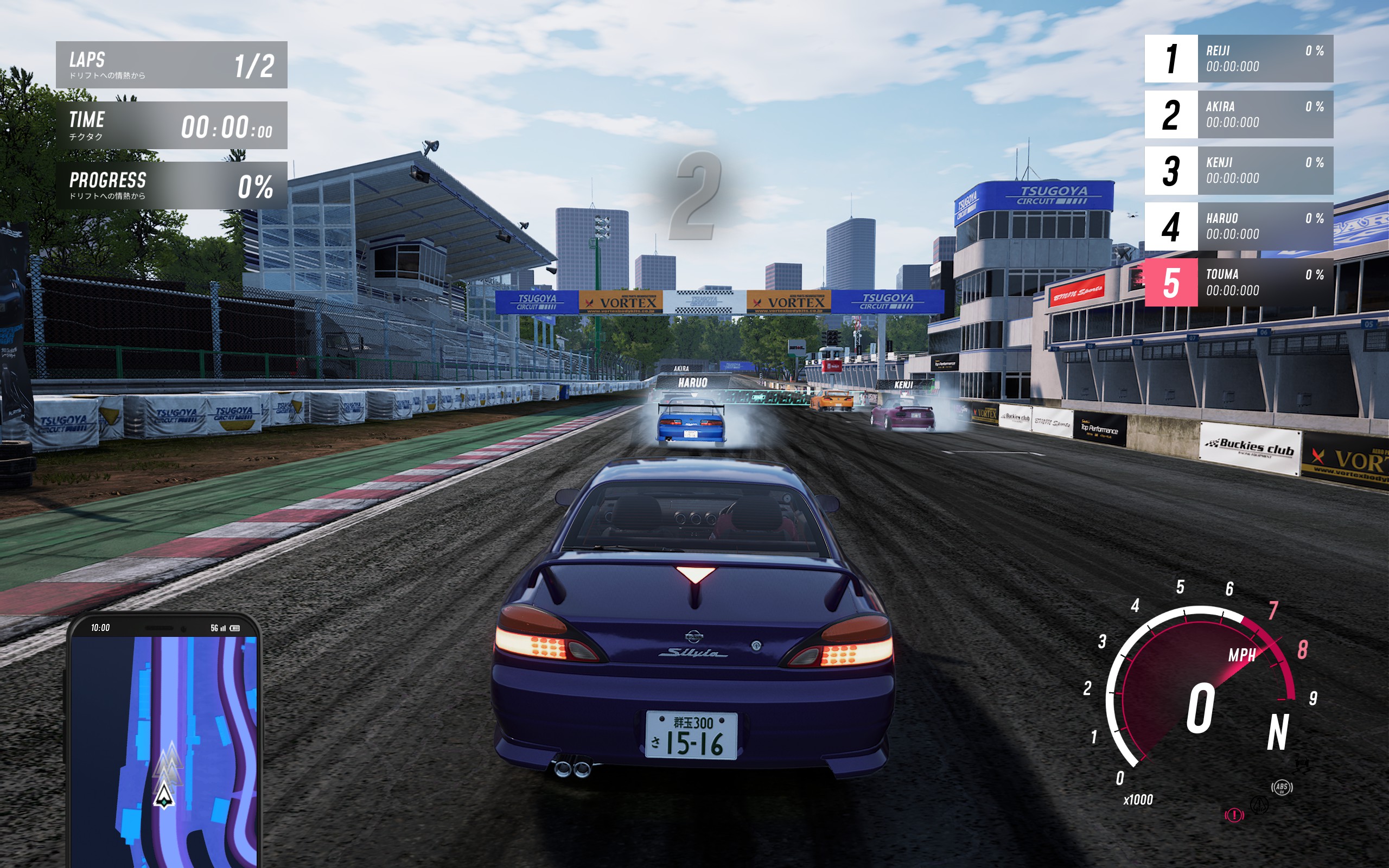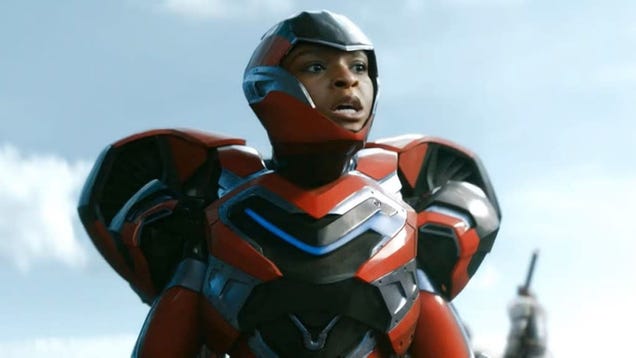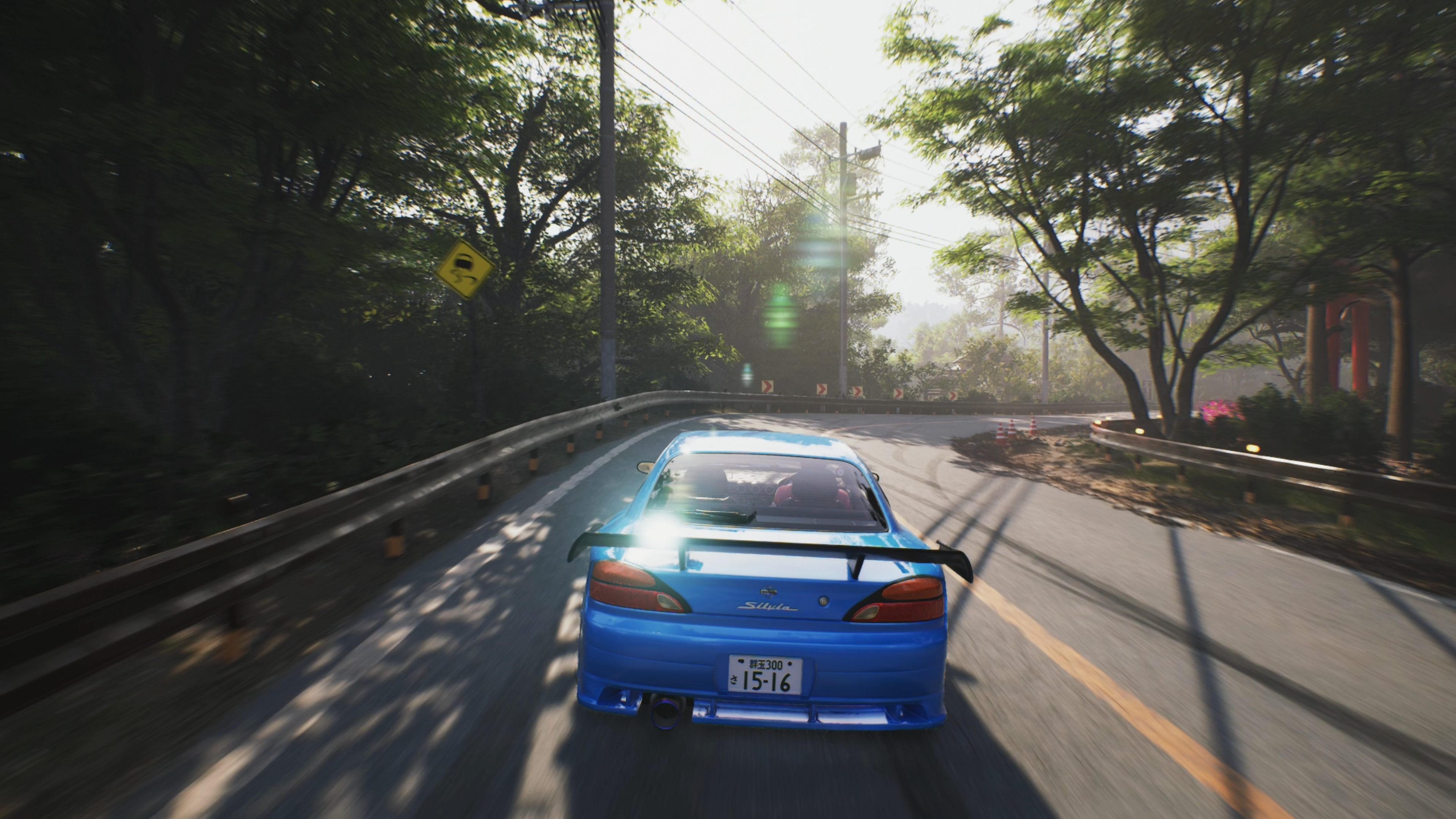
An endearingly kitchen sink approach to capturing the drift lifestyle, but its fittings need tightening up.
You’ll remember, of course, the drift events in classic Need for Speed. During that noughties era when the games were soundtracked by crunk songs, told quasi-Fast and Furious tales, and reached Christmas number one in the charts with the certainty of an X Factor winner, NFS introduced drifting as a sort of side-show. There was a totally different physics model underpinning it, one that made ordinary driving nigh-impossible but allowed for some outrageous skidding about in search of a high score.
What is it? An open world racer with drifty physics and life sim elements.
Release date May 21, 2025
Expect to pay $35/£29 [Remember: if the price is 49.99, round it up to 50.]
Developer Gaming Factory
Publisher Gaming Factory
Reviewed on i7 9700K, RTX 2080 TI, 16GB RAM
Steam Deck TBA
Link Official site
JDM understands the nostalgic appetite for that era of NFS game—you can tell that by its car collection of noughties NFS cover stars. But its ambitions are far higher than the throwaway drift events in EA’s racers, and in fact higher than those games in their entirety. Here’s a game that wants to capture every nuance of drift culture and its Japanese origins, wants to tell you a story about an outsider in an insular community, a failing sushi delivery business and an unsolved murder all at once, all through the medium of anime comic panels.
It’s also an open-world game with NPC storylines, with an impressive roster of licensed vehicles and a heaving catalogue of visual and performance parts for all of them. And at the nucleus is a driving discipline which most games treat as a momentary diversion.
The handling model takes on crucial importance here. Not only does it need to make drifting fun, challenging, and vaguely authentic as a simulation, it also needs to make driving around the open world when you’re not powersliding for high scores feel pleasant. There are drag events, grip races and delivery runs in JDM’s event roster and in all of them, getting a drift going is a bad idea because it slows you down. It also offers arcade and sim handling options, with a range of assists within them.
Is it versatile enough to pull that off? It is not. Using either arcade or sim physics, trying to drive your car conventionally around the narrow suburban streets of JDM’s fictional Japanese burgh always feels a bit awkward and that only comes to the fore when you race in track events. Fortunately, the drift physics are spot on.
And that’s why I completely forgive it for not being Forza Horizon in a straight line. Once the steering angles are applied, It’s an odyssey of tire smoke and revs bouncing off the limiter. There’s such a pure sense of gratification to holding a drift angle in parallel with the angle of a turn, reminiscent of pulling off a nice long grind in Tony Hawk’s Pro Skater, it’s enough to make you care about drifting as much as Gaming Factory clearly does.
That’s the other thing: this feels like a pleasantly personal game. It’s fascinated with esoterica that other games would brush past. How many stories have you read about a young Polish boy trying to ingratiate himself in a suburban Japanese community? Hardly any, is my guess.
How many games let you clutch-kick during a drift, or mess about with your wheel alignment angle to fine-tune the sensation of mid-corner control? But JDM does, because it seems determined to be the alpha and omega of this one thing. And that’s smart. A small independent project like this isn’t going to topple Need For Speed, but it can put its flag resolutely in one specific piece of its territory.
You know how it goes with ambitious, eccentric passion projects, though: there are rough edges. And boy howdy, you could lose a few layers of skin brushing against this thing.
Know that I take no pleasure in reciting this list. There are translation issues (an early tutorial message explains how ‘breaking’ to slow the car works). There are optimization issues. And I say that with the considerable qualification that my RTX 2080 TI is no longer the frame-vaporizing powerhouse it once was—I’m fine with not hitting max settings if the pixel fidelity’s appropriately high, but JDM’s scenes just don’t justify the chug.
Loading screens are onscreen more often than they should be, hanging around for just a few extra seconds whenever you teleport between garages on the map, enter or exit a mission. And the map markers sometimes blend into the map detail.
It takes too long to turn a page in the anime sections (really, though). After completing an event, there’s five to ten seconds of awkwardness, waiting for the UI to show you various messages about things you just unlocked, levelled up, or completed, before it’ll show you the next mission on the map. Trying to set that mission location as a waypoint and have the map show you a route there is not a foregone conclusion. There are odd difficulty spikes, and other events at which the AI drivers seem fairly hapless.
So it goes, throughout the game’s five chapters. If you look for them, you’ll see morsels of jank just about everywhere. Some are pretty inconsequential, or even endearing (there’s an earnestness to the storytelling in those comic panels that’s hard to hate, however basic the component parts may be), but a couple—the performance and AI issues—are harder to turn a blind eye to.
It leaves you with the sense that there’s a brilliant game in here which isn’t releasing in its final form. But since this isn’t an Early Access release, and indeed Gaming Factory ran a demo and collected plenty of feedback from it earlier this year, I can’t ignore the rough bits just because I like the game.
Nor can I ignore the awkwardness JDM evokes when it delves into ‘impress the busty anime girl with your drifting skills’ territory. One mission has you giving your friend a lift home and amassing drift points to raise her excitement level, with accompanying facial expressions. All I can say is that those diversions do nothing for me.
However: mechanically and (for the most part) conceptually, I really like the game. I want it to succeed. It’s so inventive with its mission types, switching between Crazy Taxi-esque sushi delivery runs in which you’re scored on damage taken and style points, duels against unfriendly locals, and helping your influencer friend to create content (whatever she’s saying on camera simply shows up as ‘Blah blah blah’ in the comic panels).
It’s generous with its unlocks and currency rewards. It actually wants you to buy all the cars on its roster and tune them so that they feel like your own. And it really succeeds as a walk-in encyclopedia of Japanese tuner and touge culture, taking every opportunity in NPC interactions, training missions, and loading menu text to add another tidbit about the discipline’s history and evolutions.
And over the course of the next year or so, its rough edges probably will be sanded down. Probably. I can only play and evaluate the game as it appears today though, and that game doesn’t always let JDM’s best qualities shine.
